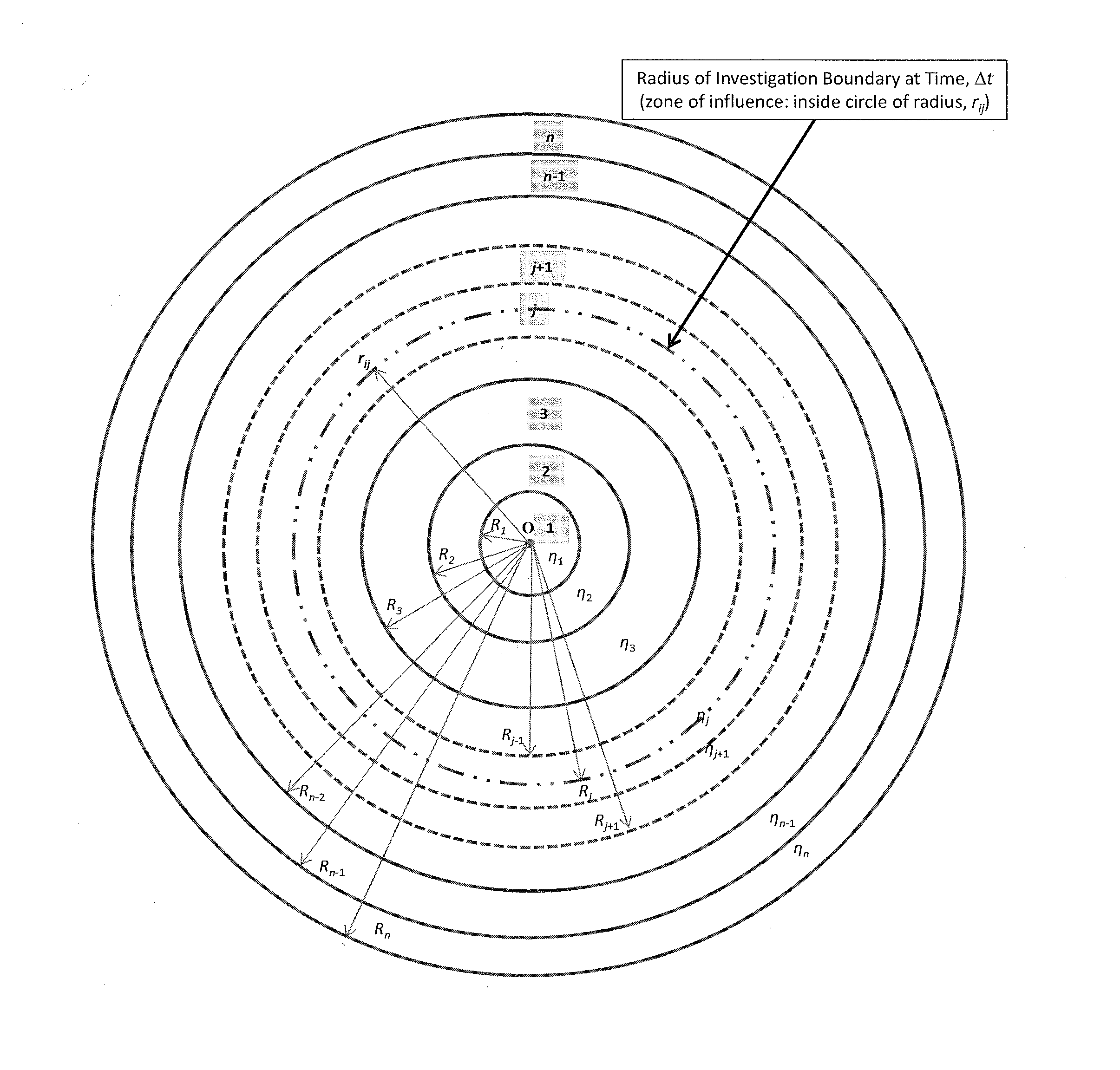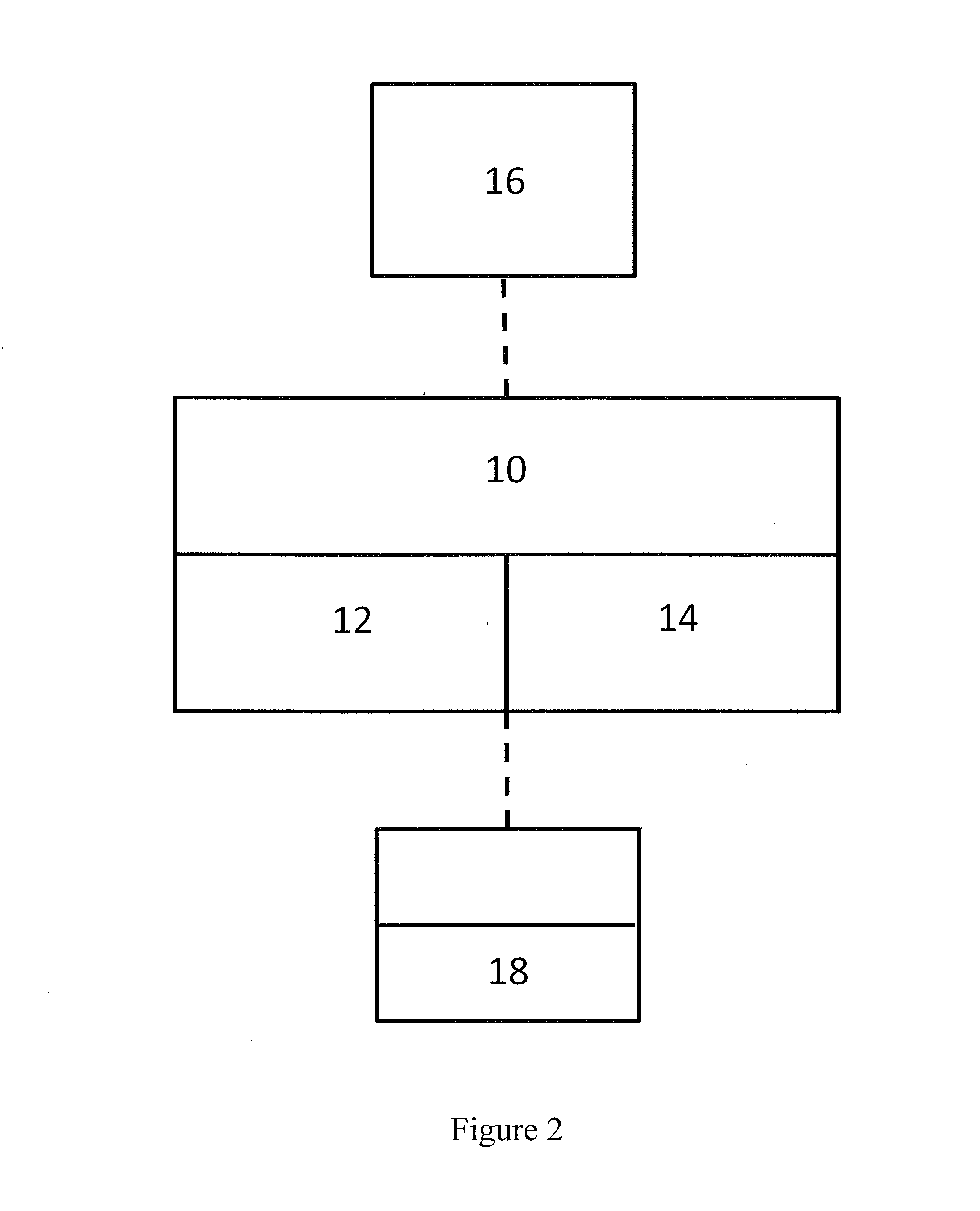System For Computing The Radius Of Investigation In A Radial, Composite Reservoir System
- Summary
- Abstract
- Description
- Claims
- Application Information
AI Technical Summary
Benefits of technology
Problems solved by technology
Method used
Image
Examples
Embodiment Construction
[0022]FIG. 1 schematically shows the mechanism of reservoir fluid flow when pressurized fluid is introduced into a vertical active well at location O. In FIG. 1, the reservoir has been divided into a number of concentric regions (n), where the jth region hosts the perimeter with a radius of rij to signify the radius of investigation at time Δt. Each region, for example, region 2, is separated from the adjacent regions, regions 1 and 3, by boundaries, in this example, at radii R1 and R2. Similarly, the jth region, arbitrarily illustrated for hosting the radius of investigation at time Δt, is demarcated by two similar dotted circles with radii Rj−1 and Rj. Each region has distinct rock and fluid properties such as permeability, porosity, and compressibility, which may be determined using known methods. Characteristic properties of rock and fluid change from one region to another region either due to the geological heterogeneity of the rock or to the properties (e.g., viscosity, compre...
PUM
 Login to View More
Login to View More Abstract
Description
Claims
Application Information
 Login to View More
Login to View More - R&D
- Intellectual Property
- Life Sciences
- Materials
- Tech Scout
- Unparalleled Data Quality
- Higher Quality Content
- 60% Fewer Hallucinations
Browse by: Latest US Patents, China's latest patents, Technical Efficacy Thesaurus, Application Domain, Technology Topic, Popular Technical Reports.
© 2025 PatSnap. All rights reserved.Legal|Privacy policy|Modern Slavery Act Transparency Statement|Sitemap|About US| Contact US: help@patsnap.com



